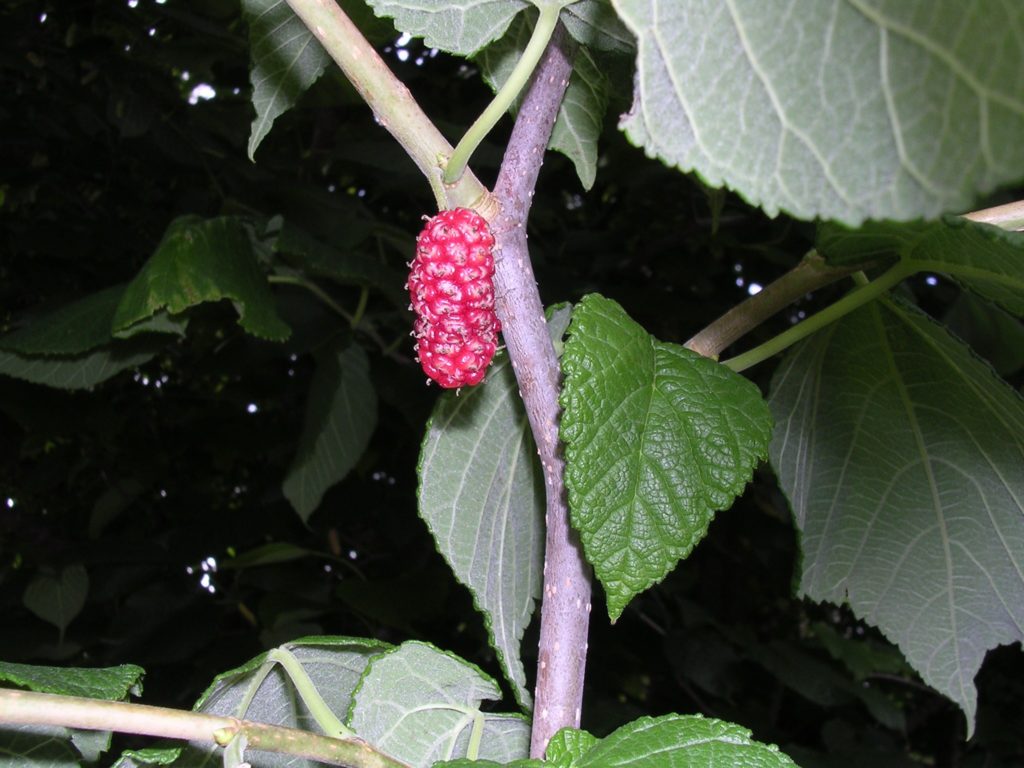
Red Mulberry
Morus rubra
Red mulberry is found in coastal and inland hammocks throughout most of Florida including Palm Beach, Broward and Dade counties. It is also found in most of eastern North America. It will reach a height of 40 feet.
Salt water and direct salt air are not tolerated, yet Red Mulberry will do well when planted behind and is shielded by other coastal trees.
The flowers tend to be male or female on different trees and are wind pollinated. You don’t have to have both for fruit, but you do if you want viable seed. A few flowers may have both sexes.
The fruit turns from red to reddish black in April and May and is a favorite for migrating cedar waxwings, kids and local birds. It is sweet and can be eaten raw or in pies.
The large leaves of red mulberry drop in late fall and are replaced in early spring. They are soft and quilted and may be round with a pointed tip, three lobed or mitten shaped. The exotic Mulberries are rough to the touch.
Red Mulberry leaves are eaten by many different kinds of insects that provide food for young birds.
Although the appearance of shredded leaves and two months of bare stems in winter seems like a lot to accept, it is well worth it when young birds survive and stay in your yard. Iguanas like the leaves too, so make sure they don’t feel welcome.
The yellow roots spread out like a Ficus and should be kept away from structures. Mix Red Mulberry with Oaks, Hackberry, Florida Elm, Red Maple, or other inland trees. Coastal hammock species like Gumbo Limbo, Mastic, Pigeon Plum or Paradise Tree are also good companions. Leave it bare underneath with fallen leaves as a ground cover.